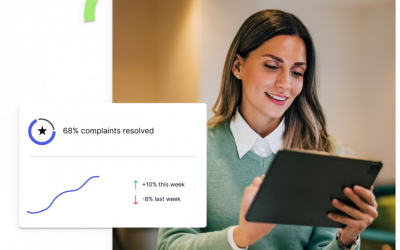Business owners and managers are no strangers to the idea of pay equity and grapple with how to best implement fair and equitable compensation rates throughout their companies.
When looking at earnings calls, CEOs talking about equity, fairness, and inclusion have increased more than 658% since 2018. Several factors have drawn attention to pay equity in recent history. Gender and ethnicity pay gaps are heavily scrutinized in the current socio-economic climate and there are also significant shifts in workforce expectations for remote work opportunities since the COVID-19 pandemic.
Business leaders have to implement fair pay and benefits for employee retention, to be attractive to potential new employees, and to stay ahead of their competition. Using data to make pay decisions can help ensure this process is as transparent as possible and helps keep a business running smoothly with happy and engaged employees.
What is Pay Equity?
Pay equality can be defined simply as “equal pay for equal work.” Many people’s knee-jerk reaction to hearing this is to jump to diversity factors that influence salaries and pay rates. However, many factors that can influence pay equalities, which all need to be considered and addressed.
Pay equality between genders and ethnicities has been a hot-button issue for decades. Many companies actively have policies in place to limit biases. With that said, looking at people analytics data can help shed light on subconscious biases that may creep into hiring cycles and promotion opportunities. Analyzing wage data can help nip these subconscious biases in the bud or help correct any issues.
Consider that all employees with a similar experience level, or tenure, should be paid as equally as possible based on their time with your company. Equal pay based on seniority level can go a long way toward employee retention. In addition, using data gathered during the hiring process or regular performance reviews can highlight an employee’s seniority and tenure. Leadership teams can then use this information to offer salaries and pay raises accordingly.
A common way to ensure pay equity is to make equal compensation for employees in the same position. This may seem easy when everyone has the same title and work hours but considering this may require HR teams and managers to look at employees who take on extra responsibilities outside of their current titles. It can be typical, and even understandable, for an employee to consider leaving a position in which their pay and title do not reflect their contribution to the company.
With a change in the workforce that has shifted toward more and more remote work, many managers and company leaders with remote employees have to weigh location and cost of living. Some businesses may choose to look at the cost of living on a sliding scale for new hires. Additionally, some companies must consider salary or benefit changes for current employees moving from an area with a high cost of living to a place with a lower cost of living.
When making a job offer, offering a raise, or adjusting salary for a promotion, it can be challenging to ensure the decision is fair to the employee and the others on staff. Using data to back up salary increases and offerings can help ensure a company is offering equal pay.
Pay Equity and the War for Talent
Currently, job candidates may be able to ask for more during interviews. As such, companies hiring amid “The Great Resignation” must consider their benefits and compensation closely. At the end of 2021, there were 10.9 million job openings and a 3% average quit rate. That’s 4.3 million people who resigned in December 2021. Of the job openings, there were more than 40,000 unfilled positions in information technology alone.
Because of increased turnover in nearly every industry during 2021, many companies have had to pay more, and offer creative benefits packages, to fill essential positions in their companies. While the hunt is on for new employees, managers and HR teams should keep a close eye on these proceedings so that offerings to new employees are fair to existing employees.
Some of the creative benefit offerings employers have come up with to entice new employees may include a shorter workweek at a higher pay rate that evens out with current employees’ pay rates. This can help ensure that the company pay structure isn’t wholly disrupted and that there is equal pay amongst employees.
Evaluate Pay Equity on a Regular Basis
Using data to make pay decisions is important for every size of company. Large enterprises with multiple locations and managers need to streamline data analysis for the organization to ensure equal pay, just as small- and medium-sized businesses need to honor commitments to equal pay across their teams. Having a robust people analytics platform that can help streamline data is critical, no matter the size of your business, and has several benefits.
A platform with these insights can be vital during the current talent shortage and can help retain current employees. Staying transparent about pay equity through data-based decisions can also help your business avoid costly disputes and legal issues. Using this data to enact fair and equal pay can also help with retention, satisfaction, work culture, and productivity in the long run.
A people analytics solution can use relevant data from different data streams, including employee profiles, experience, tenure, work location, and then deliver insights business leaders can use to ensure pay equity. People analytics can also help organizations understand their pay practices, making it easy to monitor periodically and make adjustments to ensure pay equity.




